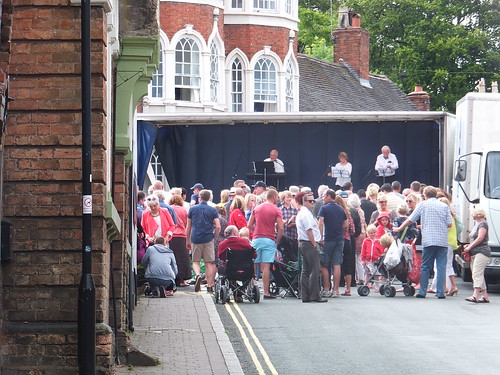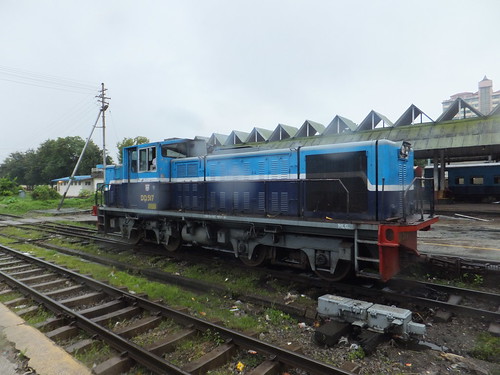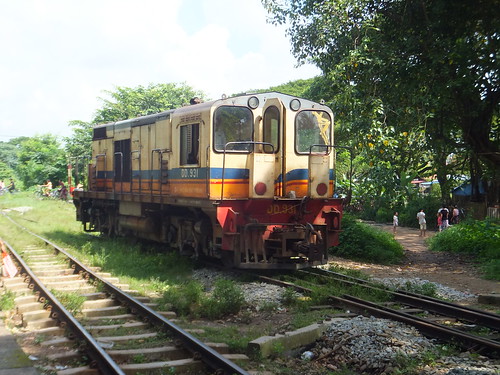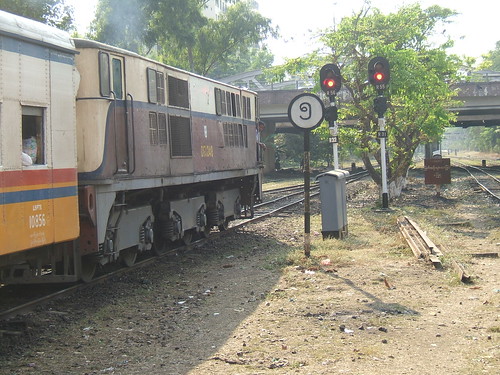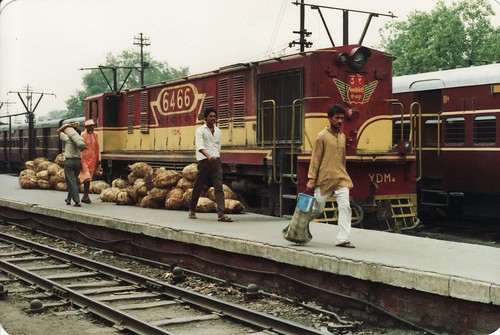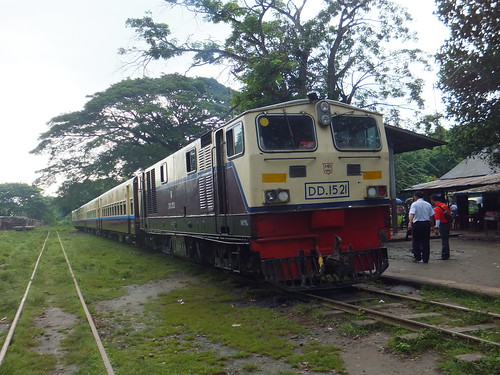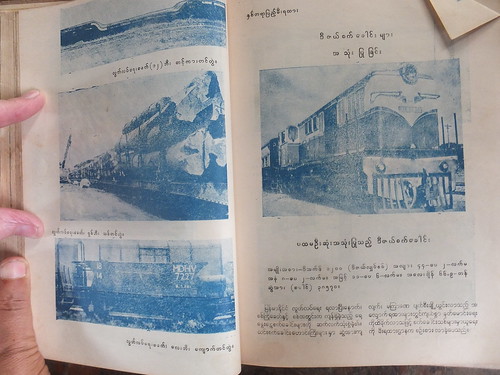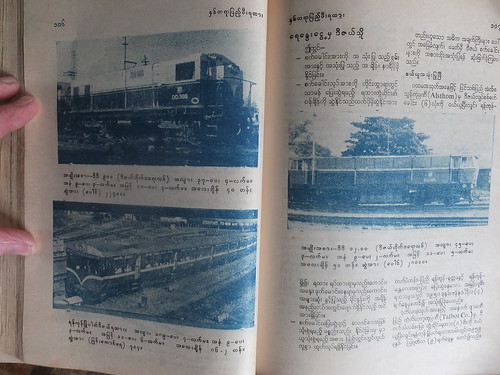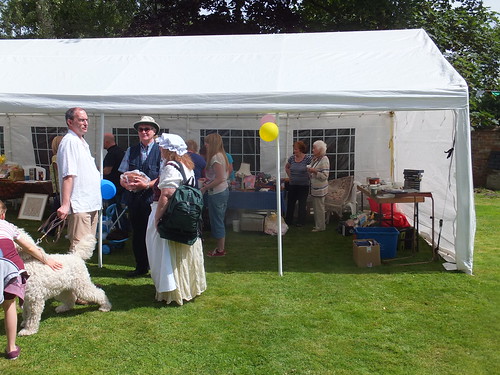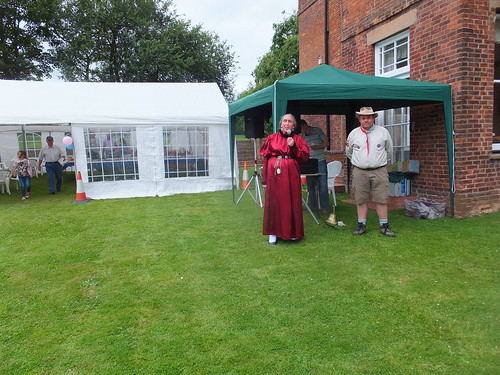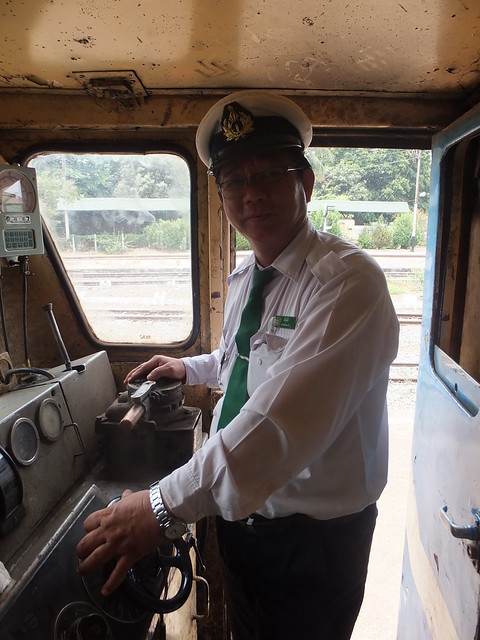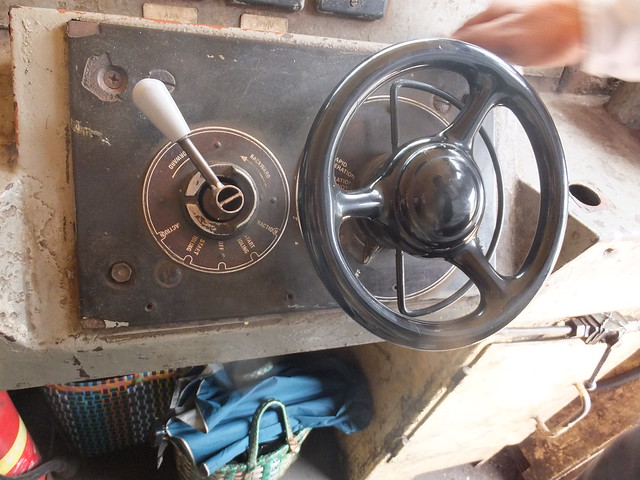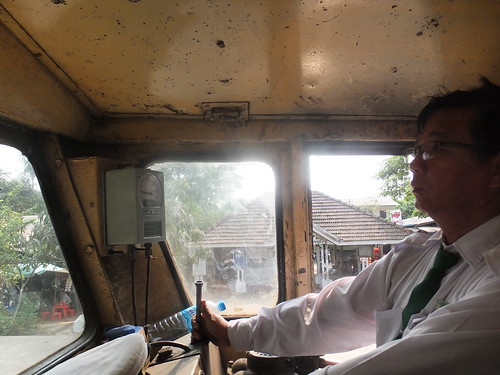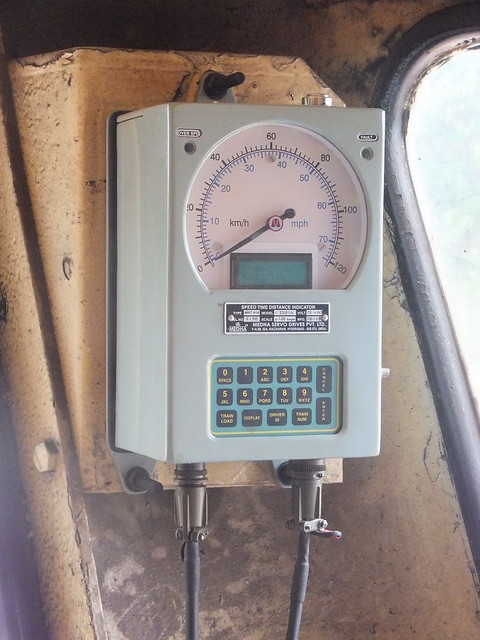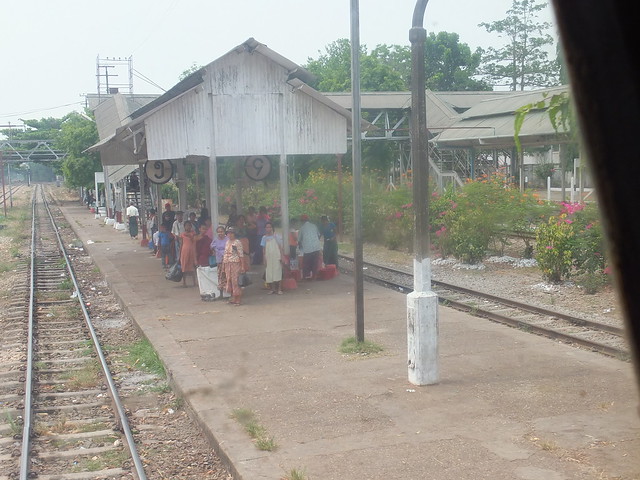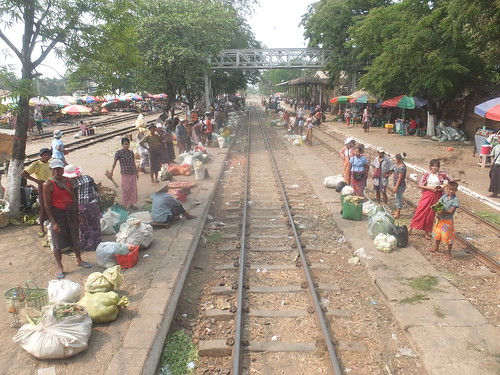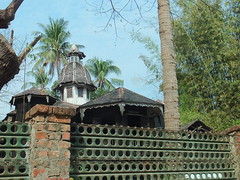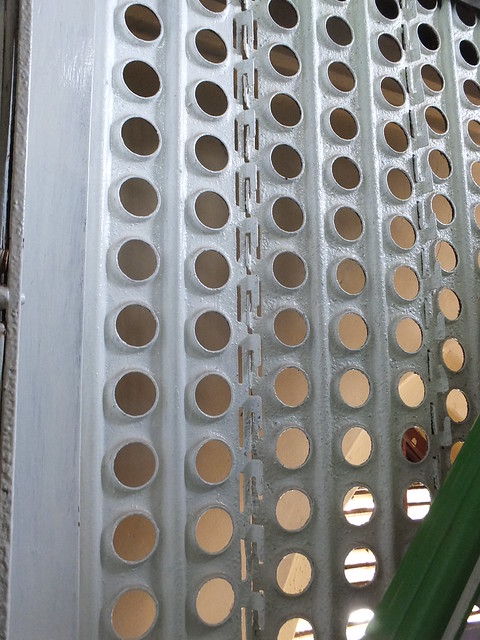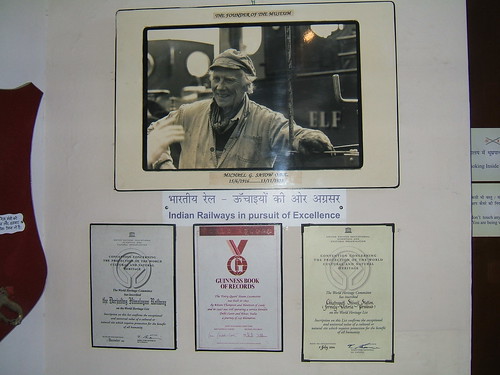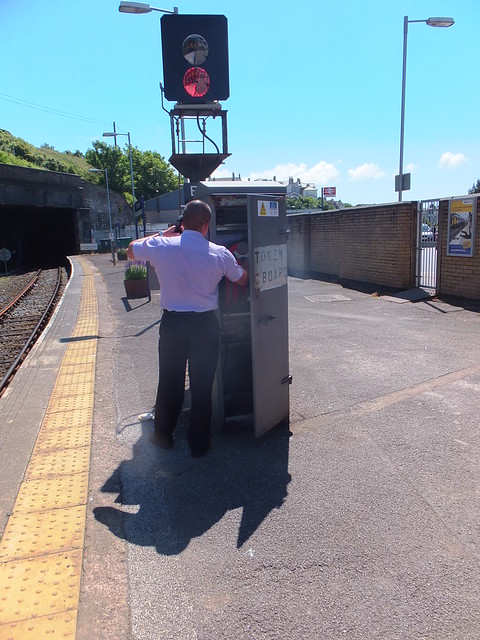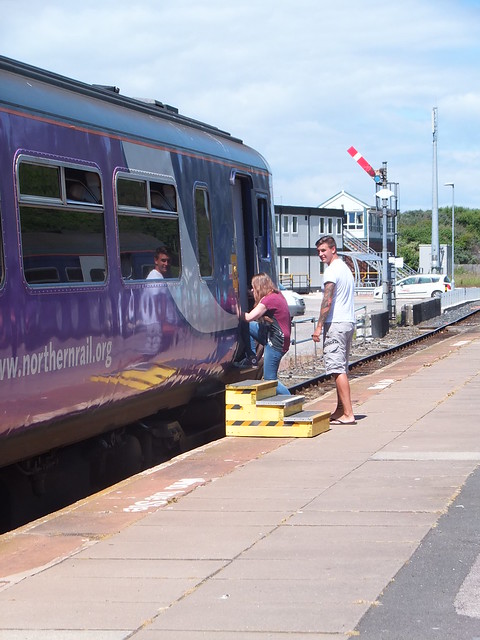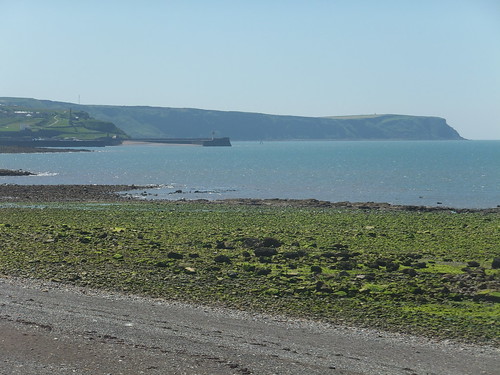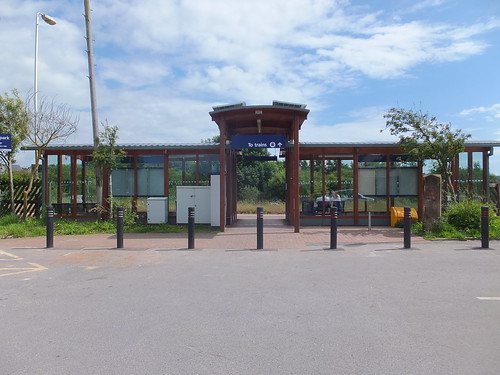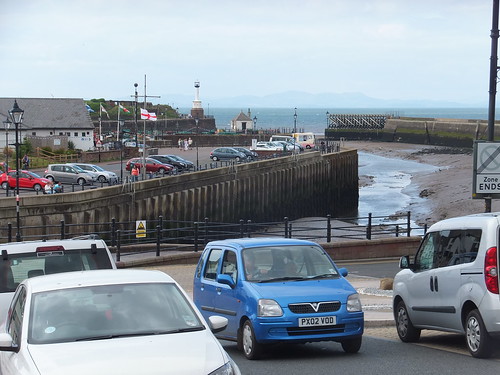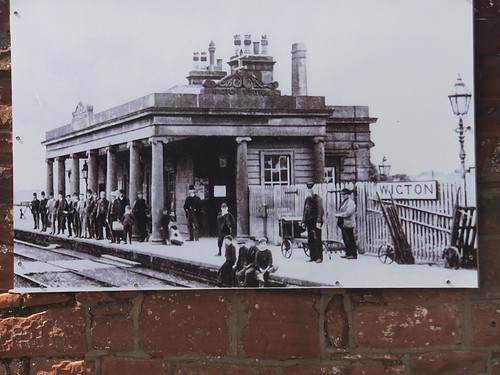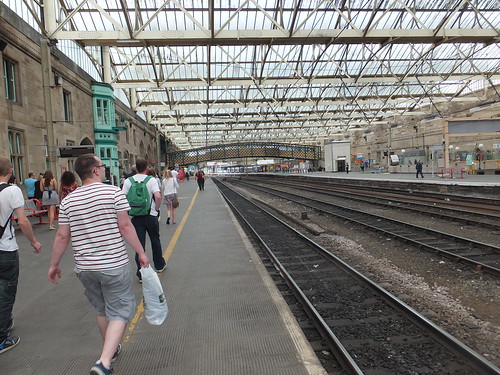Until 1967, the Chester to Birkenhead line terminated at Birkenhead Woodside station.
 Birkenhead Woodside station in 1961 (Photo: Ben Brooksbank under Creative Commons License).
Birkenhead Woodside station in 1961 (Photo: Ben Brooksbank under Creative Commons License).
For more details of Woodside station, before and after closure, refer to the excellent Disused Stations site - their article on Birkenhead Woodside is here.
A correspondent started me thinking about the services in the past so I found the 1961 Working Timetable for June to September that year and produced the simplified list (below) of passenger trains on weekdays (Monday - Saturday) between Chester and Birkenhead (Woodside). I've only shown Down trains (towards Birkenhead) from the Chester and Helsby lines which converged at Hooton. For more detail, refer to my scans of the Working Timetable pages here.
In 1961, diesel Multiple Units (DMU) were in use for many of the local services but steam locomotives were still in widespread use.
Four character headcodes had been introduced for important services so, for instance, '1M03' meant a Class 1 (express), inter-regional but terminating on Midland region. The last two digits identified a particular train. For stopping services, trains are just shown with a class letter 'B' or, for DMU which could show 2-character headcodes, B1 or B2 according to route.
British Railways had not then embraced the 24-hour clock, leading, no doubt, to no end of confusion between a.m. and p.m. timings. I have adopted the convention often used in railway circulars at the time: hours and minutes are separated by a '.' for times before noon and by a '/' for times after noon.
| Origin | Time | Destination | Time | Notes |
| Chester | 5.55 | Birkenhead (W) | 6.39 | 3D08 Parcels |
| Helsby | 6.8 | Birkenhead (W) | 6.47 | DMU |
| Chester | 6.26 | Birkenhead (W) | 6.57 | DMU |
| Ditton Jn. | 6.10 | Birkenhead (W) | 7.19 | via Helsby |
| Chester | 7.8 | Birkenhead (W) | 7.46 | DMU |
| Paddington | 12.5 | Birkenhead (W) | 7.57 | 1M00 (Note 1) |
| Helsby | 7.32 | Birkenhead (W) | 8.13 | DMU |
| Hooton | 8.0 | Rock Ferry | 8.14 | DMU |
| Chester | 7.50 | Birkenhead (W) | 8.28 | DMU |
| Helsby | 7.59 | Birkenhead (W) | 8.40 | DMU |
| Chester | 8.15 | Birkenhead (W) | 8.44 | DMU |
| Helsby | 8.12 | Rock Ferry | 8.47 | DMU |
| Llandudno | 7.8 | Birkenhead (W) | 9.4 | 1D96 |
| Wrexham | 7.30 | Birkenhead (W) | 9.10 | B |
| Helsby | 8.45 | Birkenhead (W) | 9.26 | DMU |
| Chester | 9. 8 | Birkenhead (W) | 9.37 | DMU (SX) |
| Wellington | 7.12 | Birkenhead (W) | 9.42 | B (SO) |
| Helsby | 9.8 | Birkenhead (W) | 9.49 | DMU |
| Bala | 7.12 | Birkenhead (W) | 10.0 | B |
| Chester | 10. 8 | Birkenhead (W) | 10.37 | DMU |
| Helsby | 10. 8 | Birkenhead (W) | 10.49 | DMU |
| Greenford (SX) | 8/30 | Birkenhead (W) | 11.25 | 3M10 (MX) |
| Birmingham | 8.10 | Birkenhead (W) | 11.25 | 1M03 (SO) |
| Chester | 11. 8 | Birkenhead (W) | 11.37 | DMU |
| Helsby | 11. 8 | Birkenhead (W) | 11.49 | DMU |
| Leamington Spa | 7.45 | Birkenhead (W) | 11.56 | 1M04 |
| Chester | 12/ 8 | Birkenhead (W) | 12/37 | DMU |
| Helsby | 12/ 8 | Birkenhead (W) | 12/49 | DMU |
| Chester | 12/40 | Birkenhead (W) | 1/18 | DMU |
| Chester | 1/ 8 | Birkenhead (W) | 1/37 | DMU |
| Helsby | 1/13 | Birkenhead (W) | 1/54 | DMU |
| Barmouth | 10.20 | Birkenhead (W) | 2/5 | 1M07 (Note 2) |
| Chester | 2/ 8 | Birkenhead (W) | 2/37 | DMU |
| Helsby | 2/ 8 | Birkenhead (W) | 2/49 | DMU |
| Paddington | 9.10 | Birkenhead (W) | 3/8 | 1M09 |
| Chester | 3/ 8 | Birkenhead (W) | 3/37 | DMU |
| Helsby | 3/ 8 | Birkenhead (W) | 3/49 | DMU |
| Pokesdown | 8.47 | Birkenhead (W) | 4/10 | 1M10 (SO) |
| Paddington | 11.10 | Birkenhead (W) | 4/38 | 1M11 (SO arr 4/48) |
| Helsby | 4/ 8 | Birkenhead (W) | 4/49 | DMU (SX) |
| Ince & Elton | 4/ 6 | Rock Ferry (SO) | 4/44 | B Unadvertised |
| Helsby | 4/15 | Birkenhead (W) | 4/56 | DMU (SO) |
| Chester | 4/26 | Birkenhead (W) | 5/4 | DMU |
| Helsby | 4/50 | Rock Ferry (SX) | 5/27 | B Unadvertised |
| Chester | 5/ 8 | Birkenhead (W) | 5/42 | B (DMU SO) |
| Stanlow | 5/18 | Birkenhead (W) | 5/47 | B (Note 3) |
| Bournmouth West | 9.33 | Birkenhead (W) | 5/52 | 1M13 (Note 4) |
| Helsby | 5/15 | Birkenhead (W) | 5/56 | DMU (SO) |
| Chester | 5/39 | Birkenhead (W) | 6/11> | B Note 5 |
| Ince & Elston | 5/38 | Rock Ferry | 6/11 | B (SX) |
| Hooton | 6/ 0 | Rock Ferry | 6/23 | DMU |
| Barmouth | 2/36 | Birkenhead (W) | 6/48 | B (Note 6) |
| Helsby | 6/12 | Birkenhead (W) | 6/54 | DMU |
| Paddington | 1/10 | Birkenhead (W) | 6/58 | 1M16 |
| Crewe | 5/58 | Birkenhead (W) | 7/5 | 1D54 |
| Helsby | 6/38 | Birkenhead (W) | 7/19 | DMU |
| Chester | 7/8 | Birkenhead (W) | 7/37 | DMU |
| Helsby | 7/8 | Birkenhead (W) | 7/49 | DMU |
| Paddington | 2/10 | Birkenhead (W) | 7/53 | 1M18 |
| Chester | 8/8 | Birkenhead (W) | 8/41 | DMU (SO) |
| Helsby | 8/8 | Birkenhead (W) | 8/49 | DMU (SO) |
| Llandudno | 7/20 | Birkenhead (W) | 8/53 | 1D98 (Note 7) |
| Chester | 8/38 | Birkenhead (W) | 9/10 | DMU (SX) |
| Helsby | 8/45 | Birkenhead (W) | 9/26 | DMU (SX) |
| Chester | 9/8 | Birkenhead (W) | 9/37 | DMU |
| Helsby | 9/8 | Birkenhead (W) | 9/49 | DMU |
| Paddington | 4/10 | Birkenhead (W) | 10/4 | 1M20 |
| Chester | 9/40 | Birkenhead (W) | 10/14 | DMU (Note 8) |
| Chester | 10/8 | Birkenhead (W) | 10/36 | DMU |
| Helsby | 10/8 | Birkenhead (W) | 10/49 | DMU |
| Chester | 11/15 | Birkenhead (W) | 11/43 | DMU (Note 9) |
| Paddington | 6/10 | Birkenhead (W) | 11/50 | 1M21 |
| Helsby | 11/20 | Little Sutton | 11/33 | DMU (SO) |
Note 1: Makes unadvertised stops at Chester and Hooton.
Note 2: On Saturdays, starts from Pwllheli at 8.45.
Note 3: Rock Ferry some days. Times vary.
Note 4: Time varies on Saturday.
Note 5: Unadvertised stop at Capenhurst Mon-Fri.
Note 6: On Saturdays, starts from Pwllheli at 12/45.
Note 7: SO: Dep 7/0 via Chester Cutting.
Note 8: Adv. from Hooton.
Note 9: Additional stops SO.

